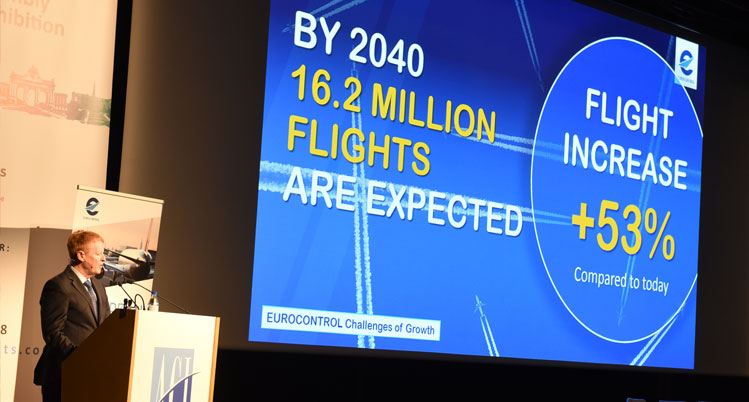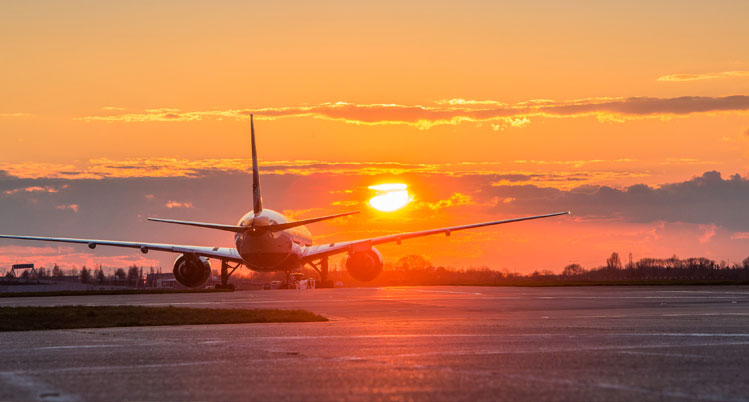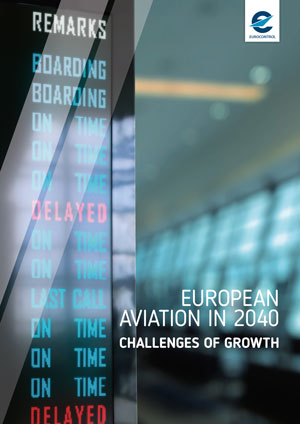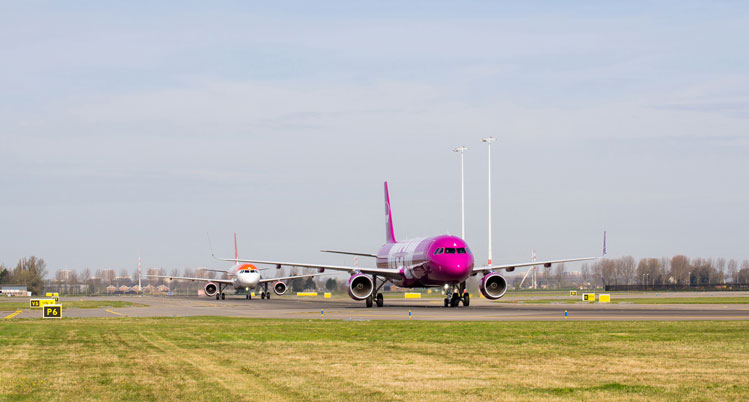Every five years, EUROCONTROL issues its Challenges of Growth studies, taking stock of the available capacity in the European airport network. The latest edition provides timely insights into the state of play in a Europe that loves flying, but isn’t particularly keen on airport expansion. Robert O’Meara reports on the findings.

Eamonn Brennan, Director General, EUROCONTROL, speaking at the ACI EUROPE & WORLD Joint Annual Congress in June. “On our most likely scenario, there won’t be enough airport capacity for approximately 1.5 million flights or 160 million passengers in 2040.”
Amid the airport branding campaigns, airline PR stunts and start-up-thronged travel scene of the past five years, the excitement may have made you a little blind to the phenomenal growth that air transport has almost come to take for granted. Did you know, for example that between 2012 and 2017, European airports experienced passenger growth that amounted to an additional 513 million passengers? Few had predicted such traffic gains.
Over the past two decades EUROCONTROL’s Challenges of Growth studies have established a pattern of publication every five years. They are the only authoritative inventory of airport capacity in Europe.
Eamonn Brennan, who was appointed Director General at EUROCONTROL at the start of the year, took the stage at the ACI EUROPE & WORLD Joint Annual Congress in June, to announce the findings of the latest edition, forecasting the capacity challenges facing European aviation between now and 2040.
The outlook is not reassuring. The most likely scenario shows an increase of 53% in traffic – to 16.2 million flights a year. However, there are significant upside risks for this forecast and it may well be that the increase is as high as 84%.
Four countries will each see more than three thousand additional flights per day (the United Kingdom, Turkey, France and Germany). Even though airports are expanding their capacity plans, with the top 20 airports planning to add 2.4 million runway movements, this will not be enough.
Brennan warned “On our most likely scenario, there won’t be enough airport capacity for approximately 1.5 million flights or 160 million passengers in 2040. This kind of report is crucial for policy makers as they prepare for the future. Clearly this is a long-term forecast so we do have time to address the issues it raises but providing more airport capacity, and especially on this scale, requires long-term planning. I think we need to address the issue as a matter of urgency.”
Many airports will become much busier, with higher delays. The study estimates that by 2040, 16 major airports will be highly congested operating at close to capacity for much of the day (up from 6 airports today). As a result of this congestion the number of passengers delayed by 1 to 2 hours will grow from around 50,000 each day now to around 470,000 a day in 2040.
More on the Challenges of Growth studies
The dual aim behind the Challenges of Growth studies is to deliver the best-achievable information to support long-term planning in Europe and to raise awareness of the scale of future needs if aviation is to meet demand.
Traffic variability over the last ten years shows that we have to consider a range of possible futures in order to manage risk: no one single forecast could hope to include all the likely risks.
After a stakeholder review, four scenarios were selected and studied for this release of the Challenges of Growth. General consensus is that the most likely is the one labelled “Regulation and Growth”, which sees moderate growth regulated to reconcile demand with environmental sustainability issues.
Other topics covered in the study include the impact of climate change and the expected rise in unmanned aircraft systems, or drones.
If those numbers sound implausible to you, consider the record number of delays in the European aviation system over the course of the summer months – brought on by a mix of capacity constraints, extreme weather and industrial action.

EUROCONTROL’s latest Challenges of Growth study estimates that by 2040, 16 major airports will be highly congested operating at close to capacity for much of the day (up from 6 airports today). As a result of this congestion the number of passengers delayed by 1 to 2 hours will grow from around 50,000 each day now to around 470,000 a day in 2040. Photo credit: Heathrow Airport
In his keynote address Brennan underlined that the first five months of 2018 have seen much higher delays than in recent years: “Europe is already struggling to cope with the levels of traffic this year.”
Traffic has increased by 3.4% (compared to the same period in 2017) but en-route Air Traffic Flow Management delays have risen dramatically from 0.46 minutes per flight to 1.05 minutes per flight. 28% of this delay was attributed to disruptive events (such as strikes) and 27% to weather. However, 55% was attributed to staffing/capacity issues, notably in Germany, France and the Low Countries.

EUROCONTROL’s Challenges of Growth studies have established a pattern of publication of every five years. They are the only authoritative inventory of airport capacity in Europe. The latest edition forecasts the capacity challenges facing European aviation between now and 2040.
Reacting to the findings, Olivier Jankovec, Director General of ACI EUROPE commented “The Challenges of Growth studies are an immensely valuable forecast. This latest edition is very clear – people cannot continue to presume that air traffic growth – and the economic benefits that come with it – can happen without a corresponding increase in airport capacity on the ground. As it stands, the lack of airport capacity will result in €88.1bn in foregone economic activity in Europe by 2040, due to unmet demand for air travel and reduced air connectivity. This isn’t something that should just be of concern to the industry – air transport is a vital component of many people’s lives. This should be of concern to everyone who values the unparalleled connectivity, mobility and prosperity that airports bring to their communities.”
Aside from building additional runways, the study looks at how existing airport capacity can be optimised, through technology & innovation, schedule smoothing, using larger aircraft and multi-modal approaches.
Taking on board the findings, Henrik Hololei Director-General for Mobility and Transport at the European Commission, recently stressed the need for increased capacity both in the air and on the ground: “The risk of scarce capacity is the biggest challenge that aviation will have to face in the coming years.”

Between 2012 and 2017, European airports experienced passenger growth that amounted to an additional 513 million passengers. Few had predicted such traffic gains. Photo credit: Royal Schiphol Group
The European airport industry could not agree more and hopes that this will be borne in mind in the current review of the EU Directive on airport charges.







